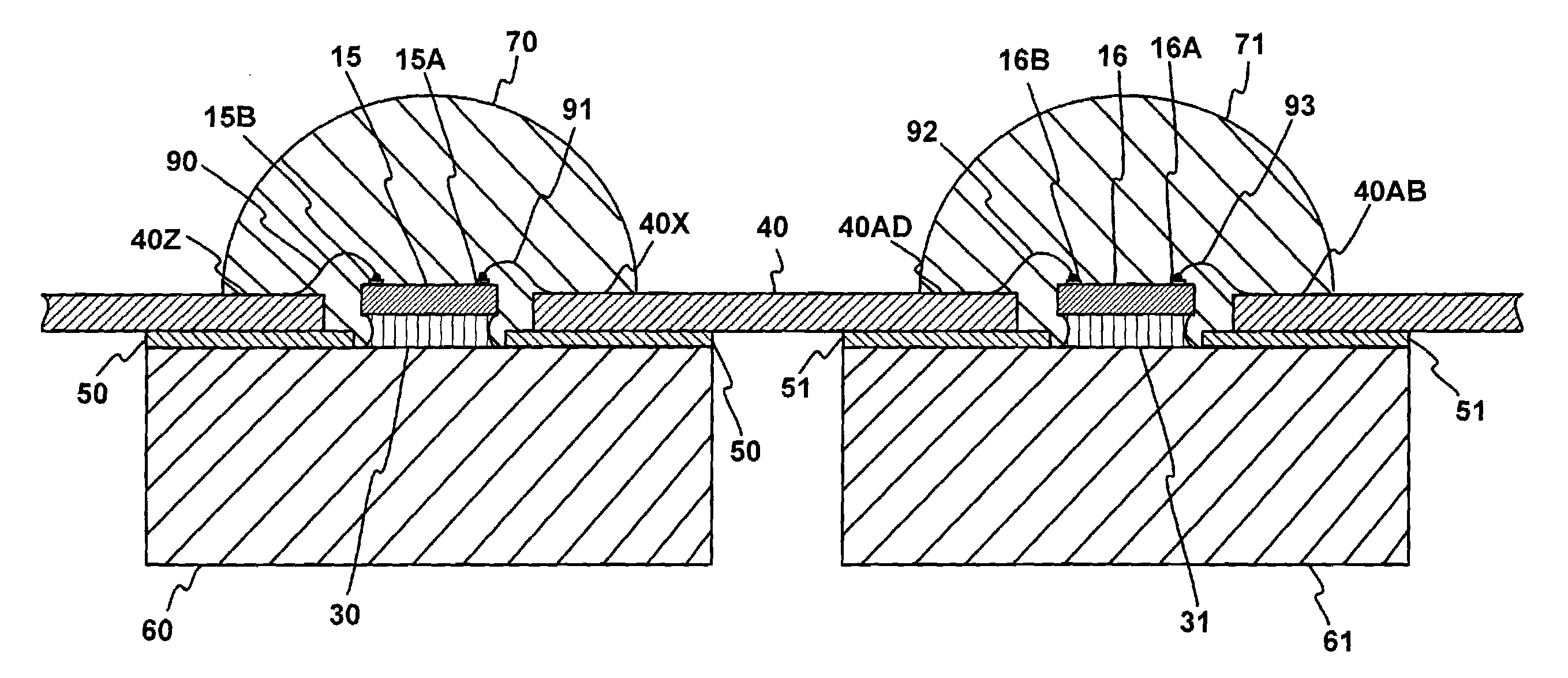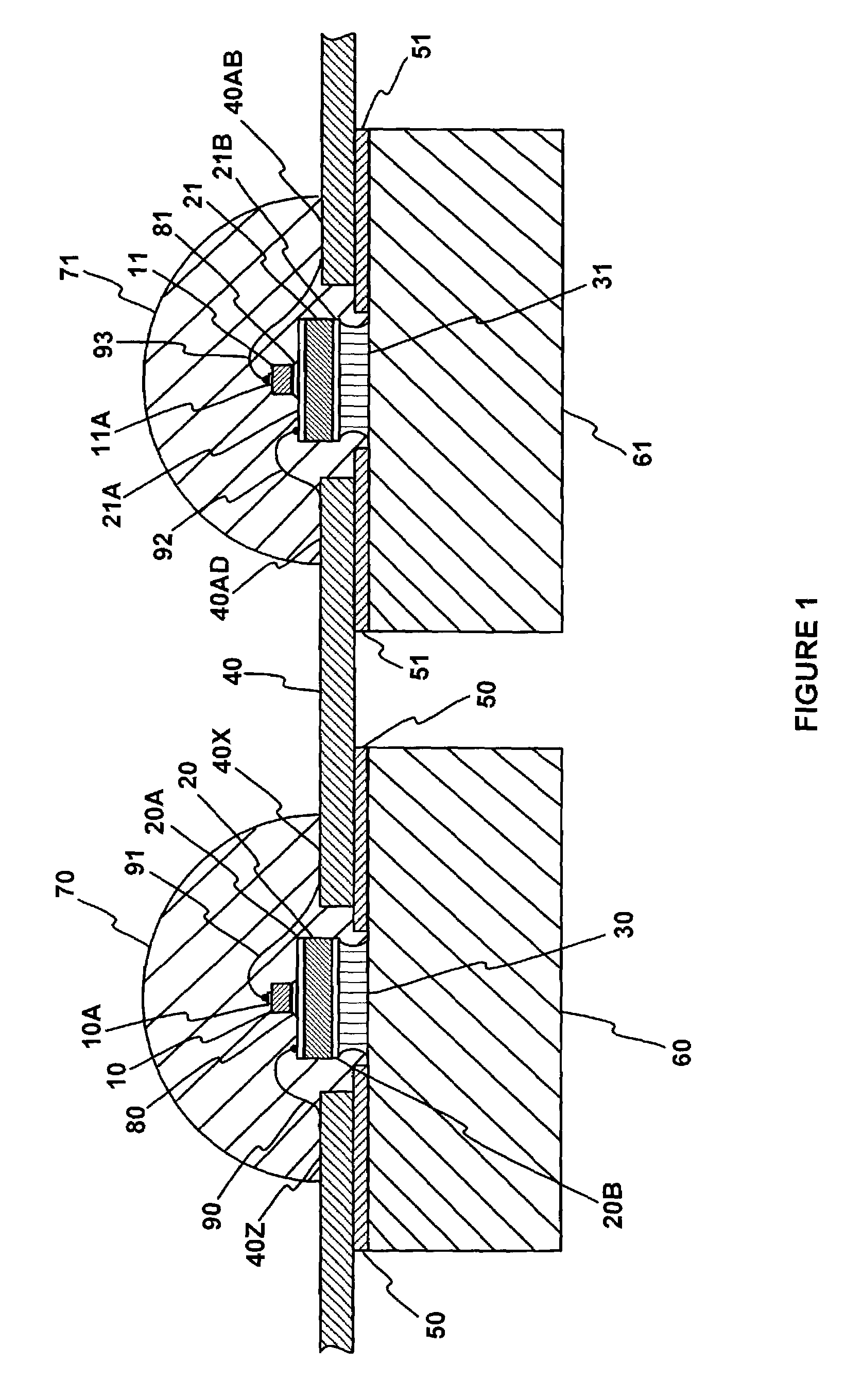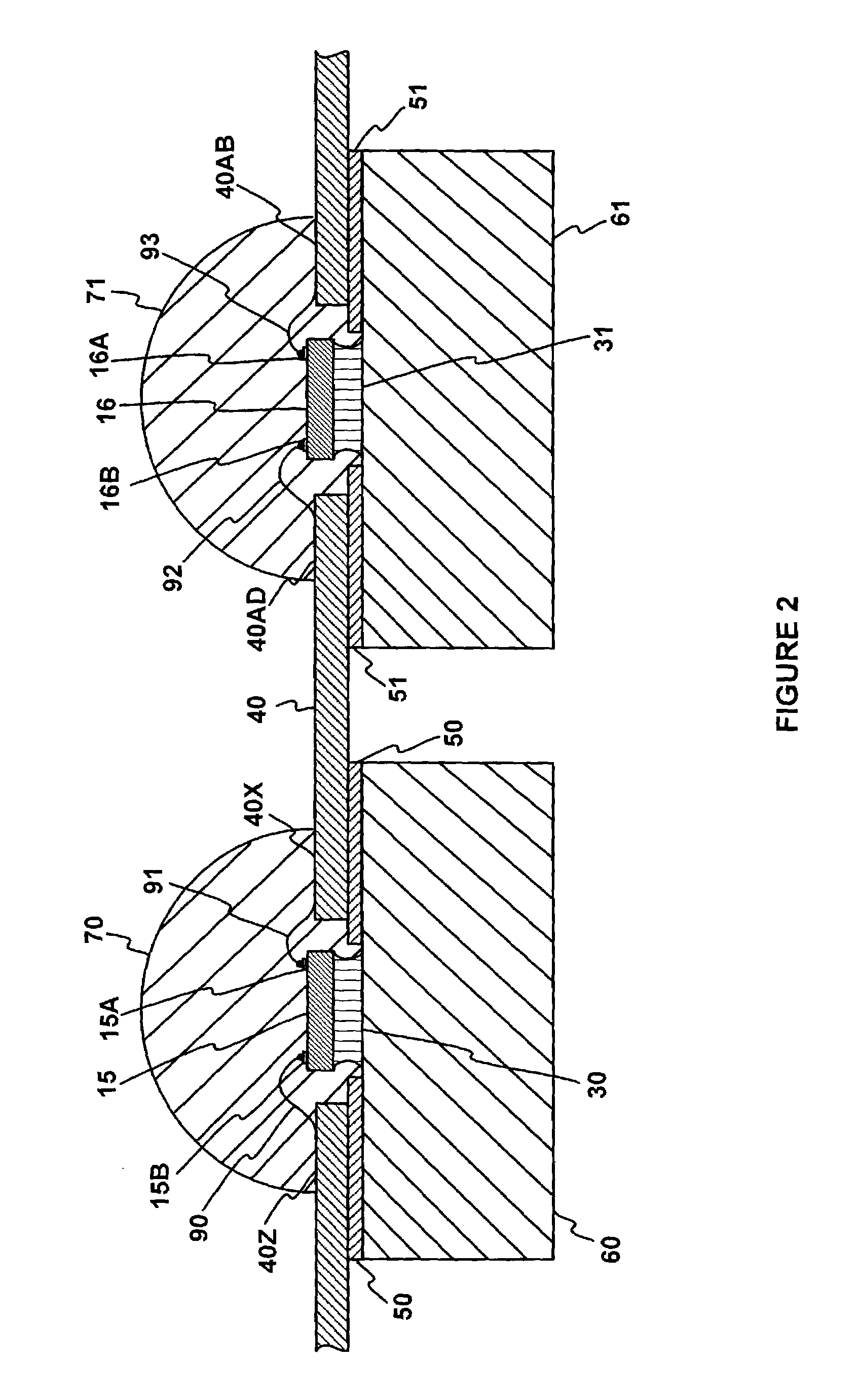Bendable high flux LED array
a high-flux led array, bendable technology, applied in the direction of light-emitting devices, semiconductor devices for light sources, solid-state devices, etc., can solve the problems of degrading the flux performance & long-term reliability of led arrays, the led array does not have features particularly suitable for 3 dimensional configurations, and the 3 dimensional configurations can fit inside the housing with interior curvature, etc., to achieve the effect of being easily variabl
- Summary
- Abstract
- Description
- Claims
- Application Information
AI Technical Summary
Benefits of technology
Problems solved by technology
Method used
Image
Examples
first embodiment
[0042]In the present invention (FIG. 1), an LED (light emitting diode die) array comprises a plurality of LEDs (e.g., LED 10 and LED 11) and a plurality of metal heat spreaders (e.g., metal heat spreader 60 and metal heat spreader 61). Some dielectric material (e.g., dielectric layer 50 and dielectric layer 51), such as epoxy, is disposed over each metal heat spreader in this LED array. A bendable electrical interconnection layer is disposed over the dielectric material on each metal heat spreader, and this dielectric material electrically insulates this electrical interconnection layer from each metal heat spreader. As shown in FIG. 1, this electrical interconnection layer may be a metal lead frame 40 with a plurality of stamped or etched metal pathways which electrically interconnect all LEDs in series, in parallel, in anti-parallel, or in some combination of these circuit configurations. This lead frame's metal pathways are electrical current pathways which carry electricity to t...
eighth embodiment
[0060]In the present LED array, each heat spreader (e.g., metal pathway 43W) is electrically isolated from adjacent metal pathways (e.g., metal pathway 43Z and metal pathway 43X) that are electrically coupled to the corresponding LED (e.g., flip chip LED 150). In other embodiments, each heat spreader may be a metal pathway that is electrically coupled to a corresponding LED. For example, LED submount 140 may be disposed with both thermal contact 140G and bottom electrical contact 140B above leadframe heat spreader 43W. A thermally and electrically conductive material, such as solder or silver-filled epoxy, may structurally couple these two submount contacts to lead frame heat spreader 43W. In this configuration, each metal heat spreader (e.g., metal pathway 43W, metal pathway 43AA) is structurally and electrically integrated with a corresponding electrical current pathway (e.g., metal pathway 43CA, which may be a thermal pathway and also a cathode or anode bus for LEDs electrically ...
tenth embodiment
[0063]In one variation of the tenth embodiment, each heat spreader's base may be sufficiently large that a portion of it is disposed underneath both corresponding electrical current pathways. In this configuration, some of the dielectric body's molding compound is disposed between the bottom of one corresponding electrical current pathway (e.g., metal pathway 44Z) and the top of the corresponding heat spreader's base. Thus the molding compound in the dielectric body forms a dielectric layer between one correspond electrical current pathway and the underlying portion of the corresponding heat spreader, whereby the heat spreader and that electrical current pathway are electrically isolated from each other. In other embodiments of the present invention, some material in each dielectric body provides dielectric layer(s) disposed between portions of multiple corresponding electrical current pathways and underlying portions of the corresponding heat spreader. Such dielectric layers may be...
PUM
 Login to View More
Login to View More Abstract
Description
Claims
Application Information
 Login to View More
Login to View More - R&D
- Intellectual Property
- Life Sciences
- Materials
- Tech Scout
- Unparalleled Data Quality
- Higher Quality Content
- 60% Fewer Hallucinations
Browse by: Latest US Patents, China's latest patents, Technical Efficacy Thesaurus, Application Domain, Technology Topic, Popular Technical Reports.
© 2025 PatSnap. All rights reserved.Legal|Privacy policy|Modern Slavery Act Transparency Statement|Sitemap|About US| Contact US: help@patsnap.com



